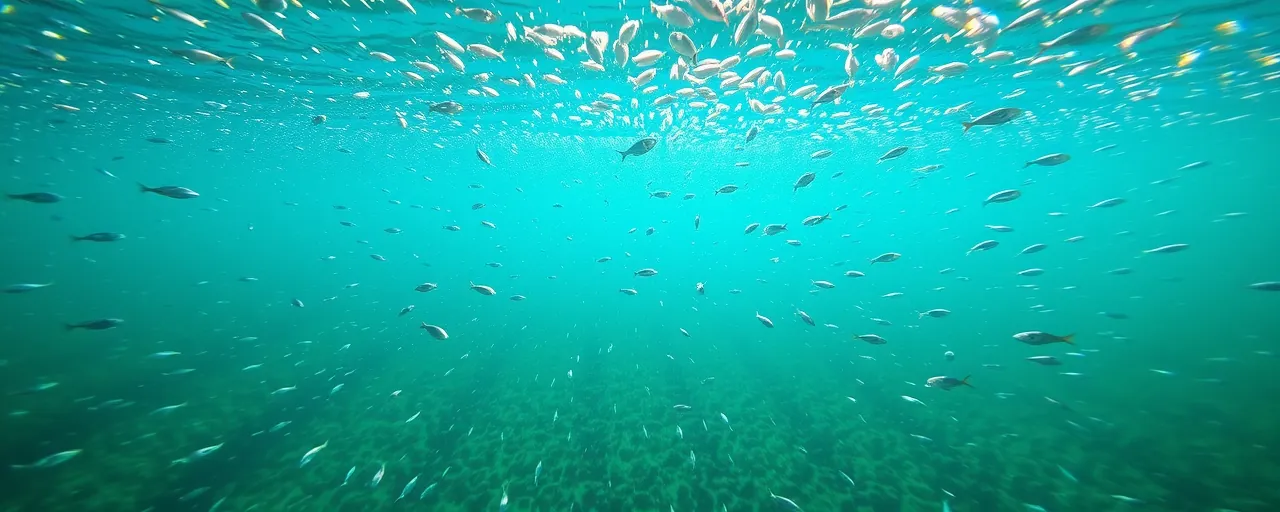Seeing the Ocean’s Hidden Pulse
The ocean never rests. Its surface churns with waves and currents that sustain life and regulate Earth’s climate. For years, scientists have tracked these movements, but a new satellite mission is revealing details once too small to see. The Surface Water and Ocean Topography mission, known as SWOT, captures tiny waves and eddies, showing they hold surprising influence over the planet’s ecosystems and atmosphere.
Launched in December 2022, SWOT is a collaboration between NASA and the French space agency CNES, with contributions from Canada and the United Kingdom. Its radar measures water height across nearly all of Earth’s surface every three weeks, creating detailed maps of ocean features as small as a mile wide. These submesoscale features, too fine for older satellites yet too vast for ship studies, are now coming into focus, offering fresh insights into the ocean’s inner workings.
Far from minor details, these small eddies and waves drive critical processes. They shuttle heat, nutrients, and carbon through the ocean, feeding marine life and shaping atmospheric conditions. As researchers dive into SWOT’s data, they’re discovering how these subtle dynamics ripple outward, transforming our view of the ocean’s role in a warming world.
The Power of the Small
Submesoscale features act like the ocean’s unseen engines, operating on scales of just a few miles. A study published in April in the journal Nature used SWOT data to reveal their outsized role in moving heat, nutrients, and carbon vertically through the water column. This movement connects the ocean’s depths to its surface, with far-reaching effects.
For marine ecosystems, this vertical flow is vital. Nutrients rising from deep waters nourish phytoplankton, the base of the ocean food web. Matthew Archer, an oceanographer at NASA’s Jet Propulsion Laboratory, notes that submesoscale eddies can deliver these nutrients to surface waters, sparking blooms that sustain fish and other species. In the Kuroshio Current near Japan, SWOT measured an eddy with vertical speeds of 20 to 45 feet per day, highlighting its role in feeding marine life.
These features also shape climate. By carrying heat upward, they warm the atmosphere. They also aid the ocean’s uptake of carbon dioxide, a key factor in regulating global temperatures. SWOT’s two-dimensional maps show that submesoscale dynamics contribute significantly to global heat and carbon cycles, far more than earlier measurements suggested.
A New Era of Ocean Insight
Ocean observation has come a long way. In the 1960s, Apollo astronauts spotted sunlight reflecting off small eddies from space. By the 1990s, satellites like TOPEX/
This advance arrives as marine ecosystems face growing stress. Ocean acidity has risen 25 percent since preindustrial times, harming coral reefs and shellfish. Warming waters push species toward the poles at 70 kilometers per decade, disrupting fisheries. SWOT’s data clarifies how submesoscale processes influence these shifts, helping researchers predict ecosystem responses.
Global collaboration powers SWOT’s success. NASA and CNES spearheaded the mission, joined by Canadian and UK space agencies. This teamwork mirrors broader efforts, like the Committee on Earth Observation Satellites, uniting nations in climate research. Yet funding debates persist. Some U.S. policymakers favor reducing budgets for agencies like NASA and NOAA to prioritize fiscal restraint, while others advocate boosting investment to enhance climate preparedness.
Charting the Future
SWOT’s findings are refining ocean models. Older models emphasized large features, like eddies spanning hundreds of miles. Now, submesoscale dynamics are being woven in, sharpening predictions of heat and carbon movement. NASA’s Estimating the Circulation and Climate of the Ocean model is starting to incorporate SWOT data, improving forecasts for ecosystems and climate.
The mission also sparks new questions. As warming alters the ocean, will submesoscale features grow more influential or fade? Could they ease ecosystem stress or worsen disruptions? With marine heatwaves and oxygen-poor zones expanding, these questions matter. Researchers hope SWOT’s global perspective will guide efforts to protect marine biodiversity and stabilize the climate.
SWOT underscores how much the ocean still teaches us. Its tiny waves and eddies, long overlooked, wield remarkable power. As scientists explore this hidden realm, they’re crafting a clearer picture of how the ocean sustains life and how humanity can navigate its changes.
